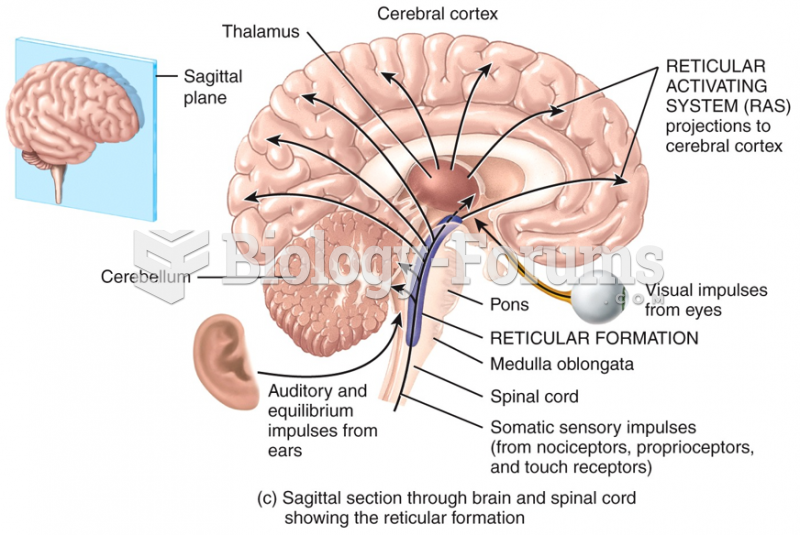Answer to Question 1
A
Some patients such as those with spinal cord injuries are unable to sense painful stimuli. You must take special precautions to protect them from additional injury. Safety is the number one priority for this patient due to lack of sensation and movement in the lower extremities. Providing precautions against taking too much pain medication and reminding the patient to drink plenty of fluids to maintain hydration are important interventions. Determination of which type of wheelchair the patient will need would be determined by the health care team closer to discharge. Pain processes require an intact peripheral nervous system and spinal cord. Common factors that disrupt the pain experience include trauma, drugs, tumor growth, and metabolic disorders.
Answer to Question 2
C
Families are continually changing. As a result, the need for family support changes over time, and it is important for you to understand that the family is more complex than simply a combination of individual members. Family nursing practice has three levels of approaches: (1) family as context, (2) family as patient, and (3) family as system. The goals need to be concrete, realistic, compatible with the family's developmental stage and expectations, and acceptable to the family. Although families are far from identical to one another, they have a basic pattern and similarity in experiences, resulting in predictable stages. Each of these developmental stages has its own challenges, needs, and resources and includes tasks that need to be completed before the family is able to successfully move on to the next stage.







